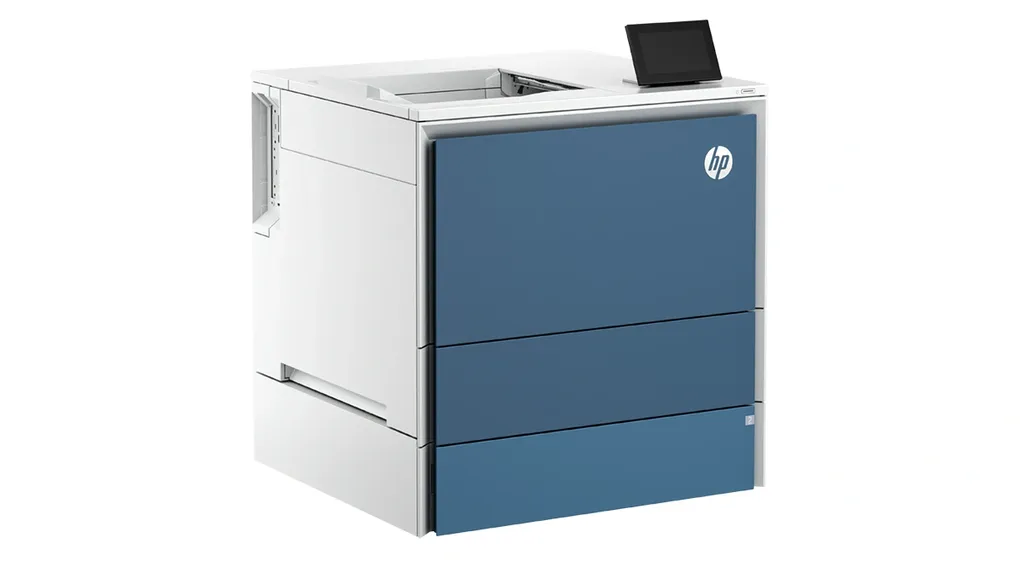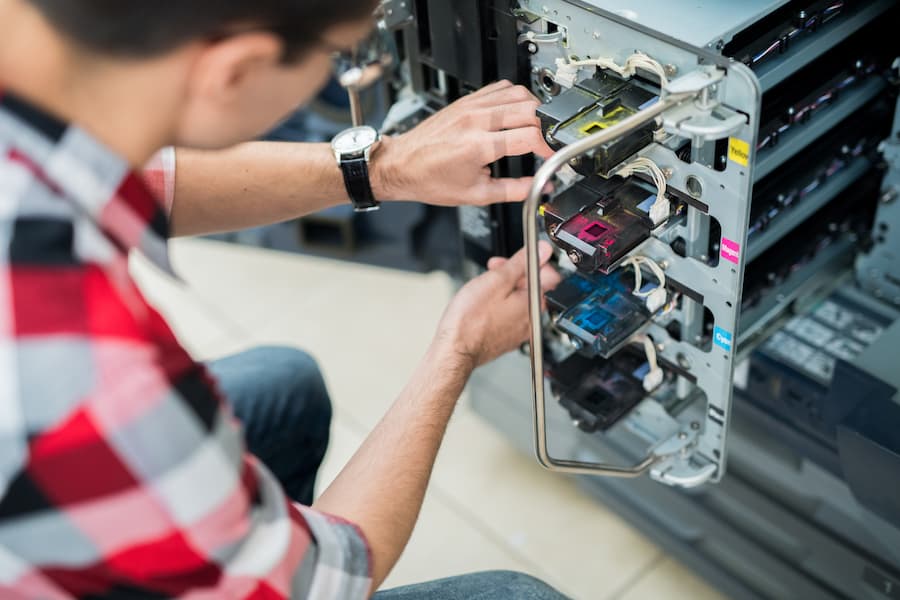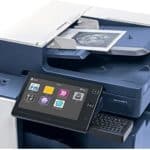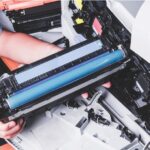Surprising Truth: Do Laser Printers Use Ink? Find Out Now
Do Laser Printers Use Ink
Do laser printer use ink? Understanding the printer technology, particularly the distinction between laser and inkjet printers, is crucial for making informed decisions.
Laser printers operate using toner powder, a distinct alternative to the dye or pigment-based inks used in other printers. These printers function by creating electrostatically charged dots on a drum that’s sensitive to light. This process attracts the toner powder, effectively transferring it onto paper.
This article explore into the surprising truth about laser printers and their use of ink, a topic often shrouded in misconception.

Understanding Laser Printers
Laser printers, a marvel of modern printing technology, operate on a fundamentally different principle compared to their inkjet counterparts. At the heart of a laser printer lies its laser beam, a key component that distinguishes it from other types of printers. This beam accurately projects the image onto a drum inside the printer, which is then coated with toner powder. The toner, a fine, electrically-charged powder, adheres to the drum’s pattern and is subsequently transferred onto paper, creating the final print.
Unlike inkjet printers, which use liquid ink, laser printers employ this toner powder. This distinction is crucial, especially when considering print quality and efficiency. Laser printers, such as the renowned HP LaserJet, are celebrated for their crisp text and high pages per minute print speed, making them ideal for environments with substantial printing needs.
In contrast, inkjet printers, which utilize ink cartridges filled with liquid ink, are often preferred by home users for their ability to produce vibrant color prints. However, when it comes to sheer speed and precision, laser printers, leveraging their advanced laser printing technology, are unrivaled.
For instance, a typical laser printer can churn out pages at a significantly faster rate than an inkjet printer. This efficiency is partly due to the nature of the toner used in laser printers. Toner cartridges, unlike ink cartridges, do not run the risk of drying out or clogging, a common issue with inkjet printers. Therefore, for offices or individuals with high-volume printing needs, a laser printer is a more suitable choice.
Moreover, the toner used in laser printers contributes to the overall superior print quality. The toner powder ensures sharp, smudge-free prints, a feature particularly important for professional documents. In addition, the longevity of toner cartridges often surpasses that of ink cartridges, making laser printers a cost-effective solution in the long run.
Understanding how laser printers work and their key components is essential. These printers, known for their efficiency and high print quality, stand in contrast to inkjet printers, which are more suited for color print jobs and use by home users. The choice between a laser and an inkjet printer ultimately depends on one’s specific printing needs and preferences.
The Role of Toner in Laser Printers
Toner, the lifeblood of laser printers, is a fine powder used for creating text and images on paper. Unlike the liquid ink used in inkjet printers, toner is a dry substance that adheres to paper through a combination of heat and pressure. This fundamental difference between toner and ink is key to understanding the advantages of laser printing.
Toner, composed of tiny particles, offers a level of precision that liquid ink cannot match. When a laser printer receives a command, it uses a laser beam to draw the desired image or text onto a drum inside the printer. This drum, coated with a static charge, attracts the toner particles in the exact pattern of the image. The paper then passes through the printer, receiving the toner from the drum. Finally, heat fuses the toner onto the paper, resulting in a crisp, smudge-free print.

The advantages of toner over ink are numerous. For instance, toner does not dry out or clog like ink, making laser printers more reliable, especially for users who don’t print frequently. Additionally, toner cartridges typically have a higher page yield than ink cartridges, offering a lower cost per page and reducing the frequency of replacements.
Moreover, the print quality with toner is consistently high. Laser printers, such as the HP LaserJet Pro, are renowned for producing sharp text and detailed monochrome graphics. This makes them ideal for professional settings where document clarity is paramount. In contrast, while inkjet printers excel at producing vibrant color prints, they often fall short in terms of text sharpness and speed.
Do laser printers need to be refilled?
Laser printers use toner, a powder, instead of ink. Unlike inkjet printers, they don’t require frequent refilling. Toner cartridges generally last longer than ink cartridges, providing a higher page yield. However, they do eventually run out and need to be replaced or refilled. The frequency of this depends on the printer model and usage.
Some users opt for refilling toner cartridges themselves or using third-party services, although this can sometimes affect print quality and printer longevity. It’s often recommended to use manufacturer-approved cartridges to maintain optimal performance and to avoid potential issues with printer warranties.
Environmental and Cost Considerations
The environmental impact of printing technology is a growing concern. Toner and ink both have environmental footprints, but they differ significantly. Toner cartridges, used in laser printers, are typically larger and last longer than ink cartridges. This means fewer replacements and, therefore, less waste. However, manufacturing toner cartridges is more resource-intensive than producing ink cartridges.
In terms of cost, laser printers, like the HP Color LaserJet Pro, may have a higher initial price than their inkjet counterparts. However, the long-term savings can be substantial. Laser printers are generally more durable and have a lower cost per page, especially when printing in large volumes. This makes them a cost-effective choice for businesses and individuals with heavy printing needs.
Inkjet printers, on the other hand, are usually more affordable upfront. They are a popular choice for home users and those with lower print volumes. However, the cost of ink can add up over time, especially for color prints. Inkjet cartridges also need more frequent replacements, contributing to higher long-term costs and environmental impact.
When choosing between a laser or inkjet printer, it’s important to consider both the environmental implications and the total cost of ownership. Laser printers, with their efficient use of toner, offer distinct advantages in terms of print quality, reliability, and long-term savings. However, for those with lower print volumes or a need for high-quality color prints, an inkjet printer may be more suitable.
Choosing the Right Printer for Your Needs
When selecting a printer, it’s crucial to weigh several factors to determine whether a laser or inkjet model is the best fit.

Volume of Printing
Firstly, consider the volume of printing. Laser printers, renowned for their efficiency, are ideal for high-volume printing environments. They work at a pace much faster than inkjet printers, making them a go-to for businesses or individuals with substantial printing needs.
Type of Documents
Secondly, assess the type of documents you’ll be printing. For crisp, professional-quality text documents, a monochrome laser printer is often the best choice. However, if your printing needs include high-quality color images, an inkjet printer, known for its superior color handling, might be more suitable.
Long Term Cost
Thirdly, think about the long-term costs. While laser printers, like the HP LaserJet Pro or HP Color LaserJet Pro, might have a higher initial cost, their toner cartridges offer a higher page yield than ink cartridges, leading to savings over time. In contrast, inkjet printers generally have a lower upfront cost but can be more expensive in the long run due to the cost of ink.
Maintenance and Care for Laser Printers
Maintaining a laser printer is key to ensuring its longevity and optimal performance. Regularly check and clean the printer to prevent toner buildup and paper jams. It’s also important to use the right type of paper to avoid damaging the printer.
Common issues with laser printers include toner smears or paper jams. For toner smears, check the toner cartridge. If it’s leaking, it may need to be replaced. Paper jams, on the other hand, can often be resolved by carefully removing the jammed paper and ensuring the paper tray is properly aligned.
Does a laser printer ever run out of ink?
Laser printers operate using toner powder, a distinct alternative to the dye or pigment-based inks used in other printers. These printers function by creating electrostatically charged dots on a drum that’s sensitive to light. This process attracts the toner powder, effectively transferring it onto paper.
The key to setting this toner onto the paper is a specialized heating process. This method allows laser printers to produce exceptionally sharp black and white prints, as well as vibrant color outputs, making them a popular choice for both professional and personal printing needs.
FAQs
Do laser printers use regular ink?
No, laser printers use toner powder instead of regular ink.
How often do you need to replace toner in a laser printer?
Toner cartridges in laser printers typically last longer than ink cartridges, needing replacement less frequently.
Can laser printers print in color?
Yes, color laser printers like the HP Color LaserJet Pro can produce high-quality color prints.
Are laser printers better for photo printing?
While laser printers can print photos, inkjet printers are usually preferred for high-quality photo printing due to their superior color handling.
Conclusion
In conclusion, the choice between a laser and an inkjet printer hinges on your specific printing needs. Laser printers, using toner, excel in efficiency and are ideal for high-volume, fast-paced printing environments. They are a cost-effective choice in the long run, especially for text-heavy documents.
On the other hand, inkjet printers, using liquid ink, are typically better for high-quality color prints and photos. Understanding these differences is key to selecting the right printer for your needs.
You can contact us by phone, email, or by visiting our offices:
- Phone: (386) 261-8323
- Email: contact@smarttechfl.com
- Address: 771 Fentress Blvd. #10, Daytona Beach, FL 32114











